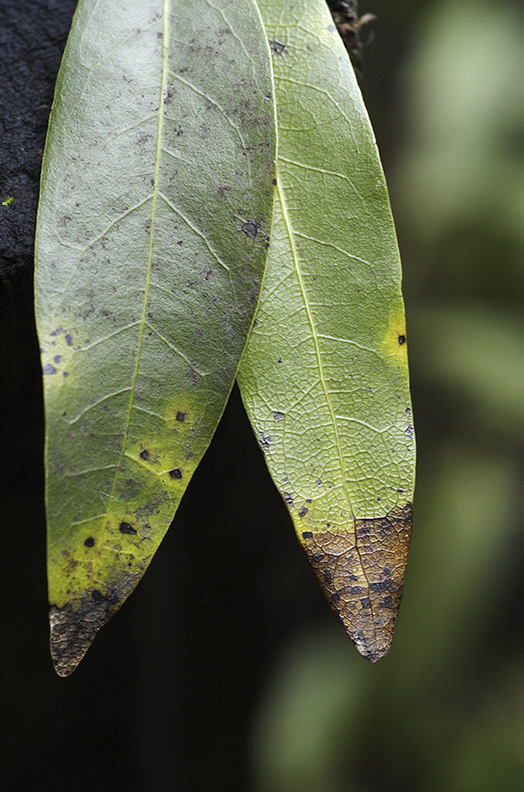By Peter Fimrite, San Francisco Chronicle

Infected Bay Laurel leaves are believed to play a significant role in the spread of disease to oak trees. (Image courtesy of Matteo Garbelotto Lab)
The California drought is helping save the state's signature tree - the mighty oak - by slowing down the spread of the plague-like disease scientists call sudden oak death.
The exceptionally dry conditions have drastically reduced the number of contagious spores that have killed hundreds of thousands of oak trees and raised havoc among tree lovers and scientists.
Preliminary results of surveys taken between April 4 and June 5 this year show an infection rate of between 2 and 10 percent of California bay laurel trees tested in 17 western counties between Fort Bragg and San Luis Obispo. That's compared with between 20 and 80 percent during a normal year when rainfall is abundant.
Pinpointing infected bay laurels is the key to fighting the tree-strangling pathogen because bays are the waylay point for the miscreant microbes before they do their dirty work on oaks.
The findings are significant because scientists had predicted that sudden oak death, discovered in Mill Valley in 1995, would kill 90 percent of California's oaks within 20 years.
The drought is giving scientists battling the microscopic malefactor a fighting chance like they've never had before.
"This is a little bit of a positive because it gives us an opportunity to see and attack the weakest link of the disease - that is, when the populations really, really shrink," said Matteo Garbelotto, the forest pathologist who heads the Forest Pathology and Mycology Laboratory at UC Berkeley. "The pathogen hates the drought. It's like an outbreak of influenza. When it is cold and wet, people get sick. We know that when it is dry, we do not have outbreaks.
Read the full story at the source
Garbelotto's lab has developed a smartphone app called Sodmap Mobile, which interfaces with the SODmap database and allows you to visualize both SOD-positive and SOD-negative trees, based on laboratory results. Look for a map of survey results in October.
